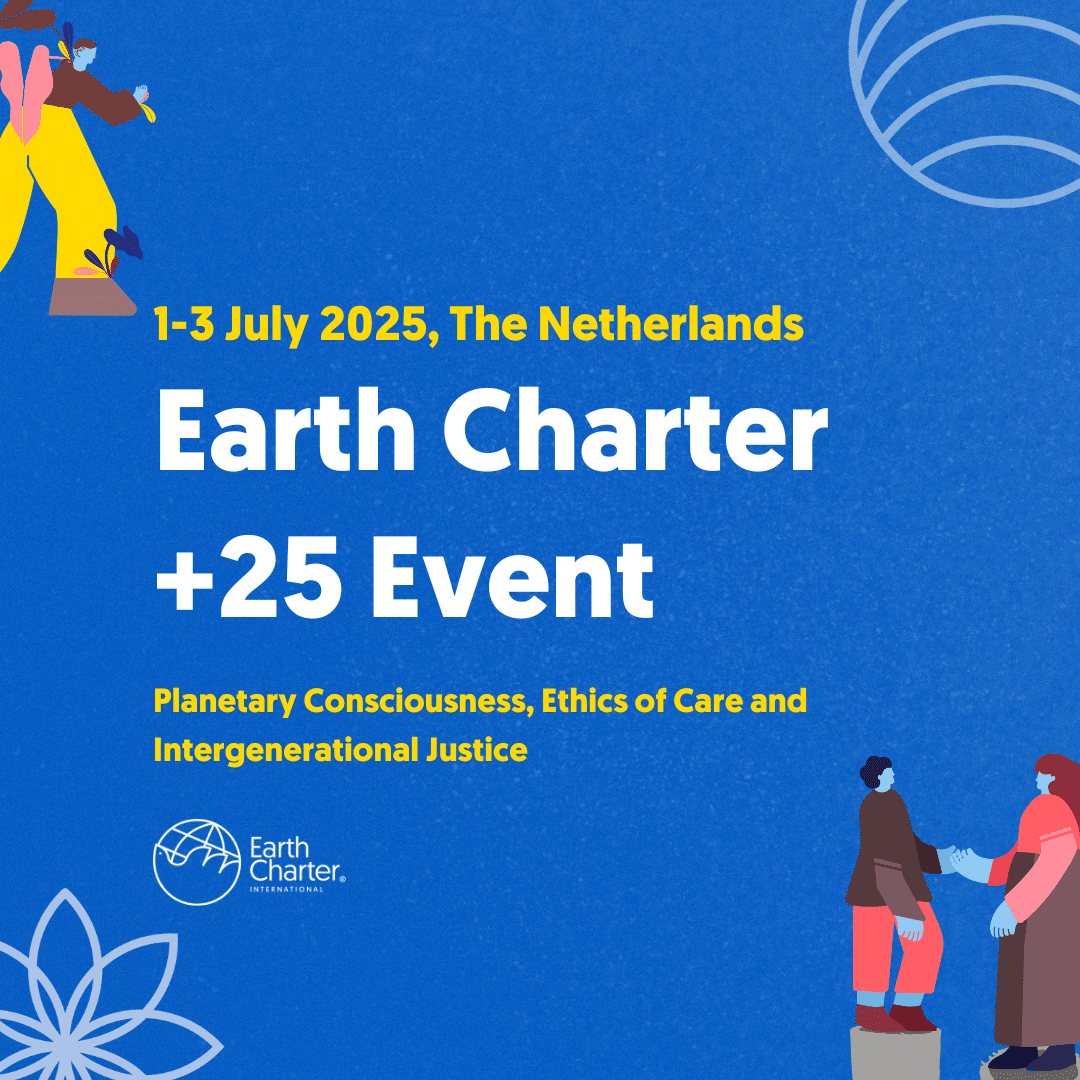The Earth Charter as the Foundation for the SDGs
Collaborative blog by: Ruud Lubbers, Alide Roerink and Lavinia Warnars
The year 2015 offers opportunities for a new beginning. For citizens, businesses and the international community to cooperate with renewed enthusiasm and bring shared principles and goals to life. This year marks the 15th anniversary of the Earth Charter. The Charter is a people’s document, resulting from a 10-year dialogue with participants from all corners of the world. It presented a foundation for the sustainability movement at the turn of the millennium. Its first sentences ring as true today as they did then:
“We stand at a critical moment in Earth’s history, a time when humanity must choose its future. As the world becomes increasingly interdependent and fragile, the future at once holds great peril and great promise. To move forward we must recognize that in the midst of a magnificent diversity of cultures and life forms we are one human family and one Earth community with a common destiny. We must join together to bring forth a sustainable global society founded on respect for nature, universal human rights, economic justice, and a culture of peace. Towards this end, it is imperative that we, the peoples of Earth, declare our responsibility to one another, to the greater community of life, and to future generations.”
In 2015, the world is celebrating the Charter’s anniversary under the theme of “One Earth Community, One Common Destiny.” Simultaneously, the United Nations will determine its next major development agenda: the Sustainable Development Goals (SDGs). The 17 currently proposed goals attempt to unite the concerns and aspirations of developed and developing countries alike, with a robust focus on inequality and poverty reduction. The key UN conference on financing these goals takes place in Ethiopia in July and forms an important preparation for the final UN sustainability summit in New York this September. This will be closely followed by the decisive UN climate change conference in Paris in December, where major polluters – from the United States to China to the EU – have the chance to overcome the failures of recent years and set the tone for a new global consensus for reducing emissions.
Also, the USA and China took a remarkable initiative last year. In the lead up to the Paris summit on climate change, they decided to work together as G2. Moreover, the EU – with its Energy Union, is attempting to concretize the concept of CO2-poor economies. This offers perspectives for cooperation between Brussels and Moscow.
All in all, this critical year offers great potential for breakthroughs. In the words of Ban Ki-Moon: ’The stars are aligned for the world to take historic action to transform lives and protect the planet’ (UN General Assembly, 2014, p. 6/34).
The report of UN Secretary General Ban Ki-Moon on the SDGs, “The Road to Dignity”, shows that there are already many parallels between the SDGs and the Earth Charter. He writes, “[…] they have called for holistic and integrated approaches to sustainable development that will guide humanity to live in harmony with the planet’s fragile ecosystems” (UN General Assembly, 2014, p. 8/34.) Guidelines for the future of the SDGs echoes the Charter, “A life of dignity of all” within which intact ecosystems must be maintained for current and future generations. Ban Ki-Moon views inclusiveness as vital in legitimizing these new goals – all voices, including youth, children and future generations, must be accounted for.
We believe that the Earth Charter can provide a moral compass and inspire the new SDGs. The Charter places poverty reduction front and center, recognizing it as an ethical, social, and environmental imperative that cannot be separated from sustainability. The Charter also recognizes the vital importance of a global cultural shift through awareness, seeking “a change of mind and heart”, which the SDGs should explicitly incorporate into their programming and policy frameworks.
As the world works to find its bearings amidst all the chaos and challenges, confusion and difficulty of forging agreement and inspiring action on the vital issues we confront today, returning to the principles of the Earth Charter ensures that we will proceed with firm moral roots.
How powerful would it be if the Earth Charter and the SDGs were combined? How much sooner would we reach the ambition with which the Earth Charter concludes?
Let ours be a time remembered for the awakening of a new reverence for life, the firm resolve to achieve sustainability, the quickening of the struggle for justice and peace, and the joyful celebration of life.







